How to Check Your Roof for Storm Damage
Updated May 5, 2024 . AmFam Team
There’s no good time to find out your roof needs repair — but you may be able to mitigate that pain by routinely checking your roof for damage after severe weather. Waiting for a leak or damage to present itself gives the problem time to grow and worsen.
And sometimes, you’ll be faced with expensive roof and interior damage repairs if you’re not diligent. By being proactive and checking your roof for damage after severe weather hits can help your roof — and your savings — stay healthy.
How to Check Your Roof for Storm Damage
Different styles of roofs require different inspection methods. No matter your style of roof, begin your inspection by examining its exterior. You can get an idea of your roof’s condition with both feet on the ground by looking for obvious damage with the naked eye or a pair of binoculars. It is highly recommended that you do not get on your roof unless you are experienced in roof repair.
After a storm, check for any debris that was blown on top of your roof. Debris could have damaged your roof when it hit or could create additional damage if it’s not removed right away. If there’s obvious damage, such as a hole formed by flying debris or a fallen tree, call a professional as soon as possible.
Assessing Different Types of Roof Damage
If you’re checking in on your roof consistently, may begin to notice warning signs of storm damage that can tell you roof damage has occurred. In some cases, roof storm damage may require you to safely get onto your roof an inspect it for trouble. Here are the types of damage that your roof can suffer:
Assessing Damage to Different Roof Types
Depending on the type of roof you’ve got on your home, storm damage can show up in a number of surprising ways. In order to best understand what to look for, have a roofer come out for a free inspection of your roof. They’ll tell you what kind of roof you’ve got, and what you need to be aware of in the future. Take a look at this list of common roof materials and the ways roof storm damage presents on each:
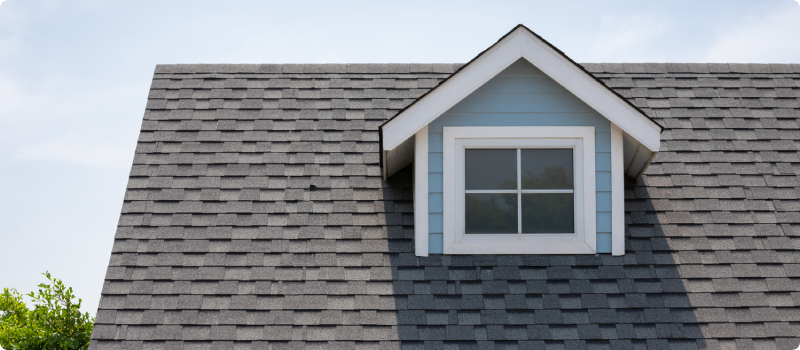
Asphalt-Shingled Roofs
When examining an asphalt-shingled roof, look for loose, broken or cracked shingles. Look for any bubbling or blistering in a shingle, as that indicates moisture has made its way to the interior of the shingle. A shingle with any damage should be replaced immediately to avoid leaks or further structural damage.
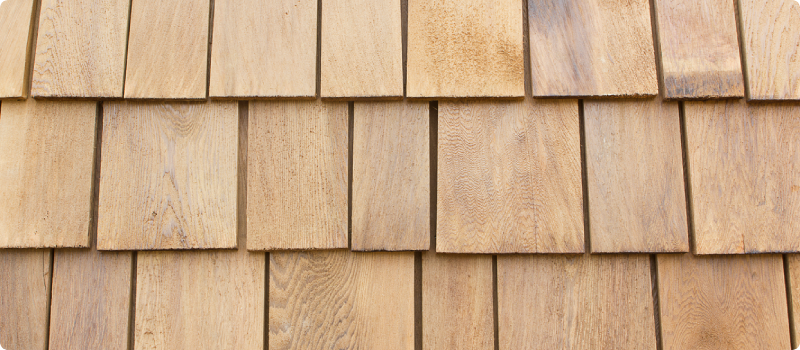
Wood Shingles and Wood Shake Roofs
While less common than asphalt composition-shingled roofs, wood-shingled roofs offer a more natural look than their more common counterparts and are more environmentally friendly. However, wood roofs require more vigilance and care from homeowners, especially after a storm.
Look for any separated, broken, cracked or otherwise damaged shingles or shakes. A damaged wood shingle or shake can quickly cause an expensive leak, so replace it as soon as possible.
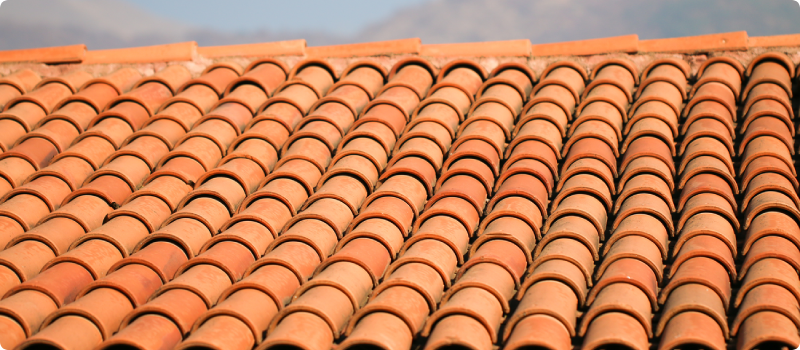
Tile Roofs
Tile roofs offer another unique-looking alternative to the modern asphalt shingles. Tile roofs are often more expensive, but are more fire-resistant, provide more protection against high winds and have longer lifespans than other roofing options.
Look for broken or chipped tiles and for any separation between tiles where water might seep in. In particularly severe storms with heavy winds, edge tiles could become separated and fly off, causing damage to other tiles.
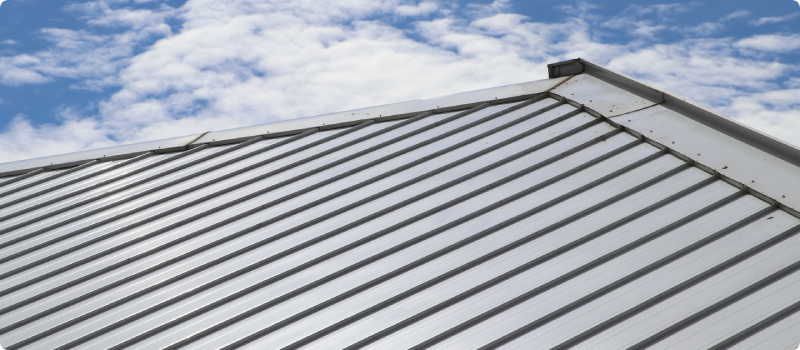
Metal Roofs
Metal roofs are the easiest of roofs to spot damage on — if hail damages your roof, you’ll see the dents. But dents on a metal roof don’t necessarily mean you need to replace it. Check for any openings in the metal that could cause water to leak into your home. Look for signs of rusting, as well as any separation between panels.

Flat Roofs
Most often made using waterproof materials, and generally used on business buildings, flat roofs are also relatively easy to spot damage on after a storm — but not from the ground. Ask a qualified professional to inspect the roof for damage if you are concerned that your home has been damaged.
A professional should look for any pools of water, indentations or tears in any seams where moisture could gather, or water could seep through. They should also make sure the drainage system is working, as flat roofs don’t have a self-draining incline like other roofs.
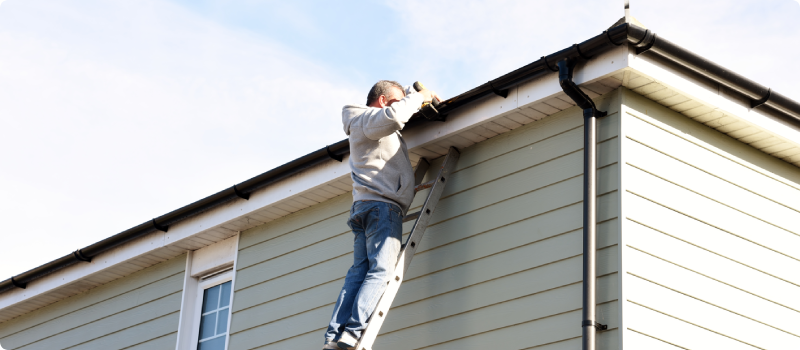
Gutters, Vents, Skylights and More
Roof damage isn’t limited to broken roofing material. Gutter damage or a broken seal around a skylight can cause just as much of a headache as a lawn full of shingles.
From the ground, look at your gutters to see if they’ve loosened, broken off from the roof or are full of debris. If a gutter can’t effectively take water from the roof to its intended destination on the ground, it could gather around your home’s foundation. If your gutters are still attached but full of debris, the debris could gather on the roof leading to the deterioration of roofing material and leaks.
If your home has a chimney or skylights, ask a qualified professional to check the sealed edges around them to make sure water can’t make its way in. A professional should also check any exhaust fans or vents to make sure they can release air appropriately and aren’t blocked or clogged.
Assessing Wind vs. Hail Damage
In most cases, wind damage to the roof will result in the shingle tearing or being pulled away from the roof. By contrast, most hail damage roof issues present as craters or dings on asphalt shingles. Both issues stand to allow water to leak through the shingle and into your home — and need to be reviewed by a roofer immediately.
Hail damage to shingles will look like pock marks dispersed across your roof. Wind damage to roof shingles can be a little more difficult to spot. This is because the shingle may have been stretched and damaged during the windstorm, and the problem may not be easy to see if you’re not up close. If you suspect wind or hail damage to your roof, be sure to get a roofing contractor out to take a look.
Home Interior Storm Damage Inspection
Once you’ve given the exterior of your roof a once-over, it’s time to see if it’s showing signs of damage from the inside. If you have an attic, look for any leaks or soft spots in the ceiling that would indicate a fault in the roof. Check along walls for any water damage or for any signs of animal life that would indicate a newly formed hole in or along your roof.
If you don’t have an attic, check the same areas along your living space ceilings, in and around your cabinets, and along any skylights, vents, chimneys or walls. If you notice any leaks or damage, contact a professional immediately — it’s much cheaper to have repairs done early on than it is to have an entire roof replaced. Identifying interior water damage quickly can also help mitigate potential mold and mildew problems in your home.
Does homeowners insurance cover water damage from a leaking roof?
If the damage is the direct result of a storm, such as a hole made by a falling tree or wind damage, you’ll most likely be covered. However, if the damage is the result of wear and tear, the repairs to your roof will not be covered. Your American Family Insurance agent can help you navigate the particulars of your policy and plan for the unexpected. And with a little preparation, you can be on the road to recovery in no time.
If you recently had to replace your roof due to storm damage or other damage, your new roof may help you save on your insurance. American Family rewards homeowners with lower rates on home insurance if your home’s roof has been replaced within the last five years.* Contact your local agent or get an online quote today to see how much you could save.
This article is for informational purposes only and includes information widely available through different sources.
This information represents only a brief description of coverages, is not part of your policy, and is not a promise or guarantee of coverage. If there is any conflict between this information and your policy, the provisions of the policy will prevail. Insurance policy terms and conditions may apply. Exclusions may apply to policies, endorsements, or riders. Coverage may vary by state and may be subject to change. Some products are not available in every state. Please read your policy and contact your agent for assistance.
*Homeowners premiums are based on a variety of factors including roof age, roof material and more, which impacts the rate you are quoted and that you will pay.
Tools & Resources
NextScripts
JSS component is missing React implementation. See the developer console for more information.

